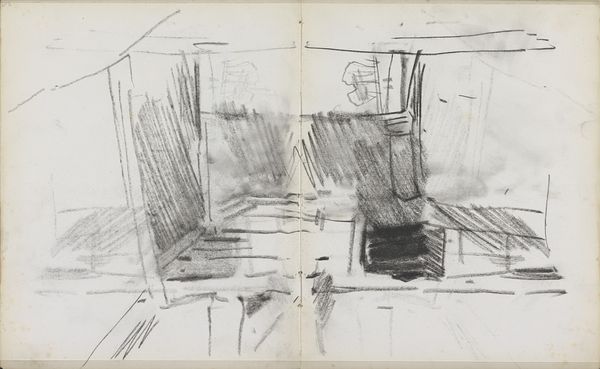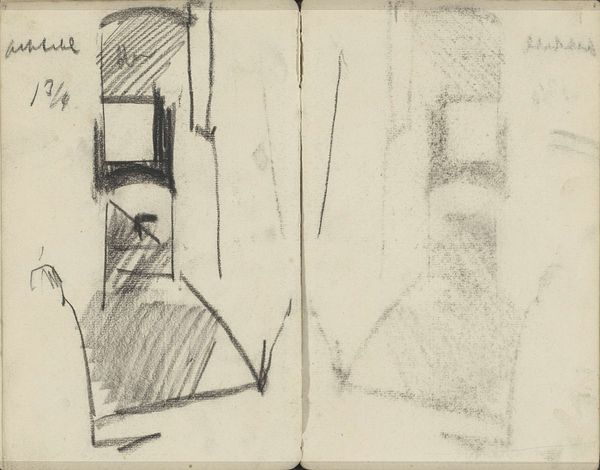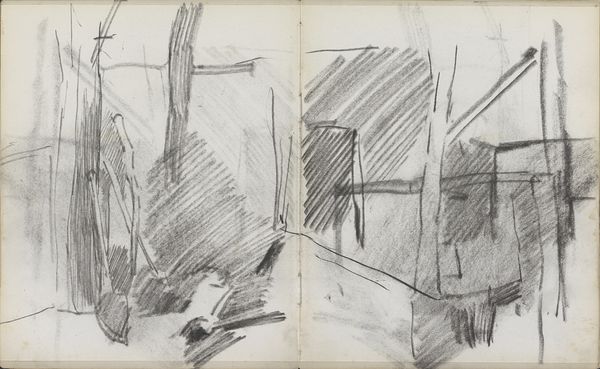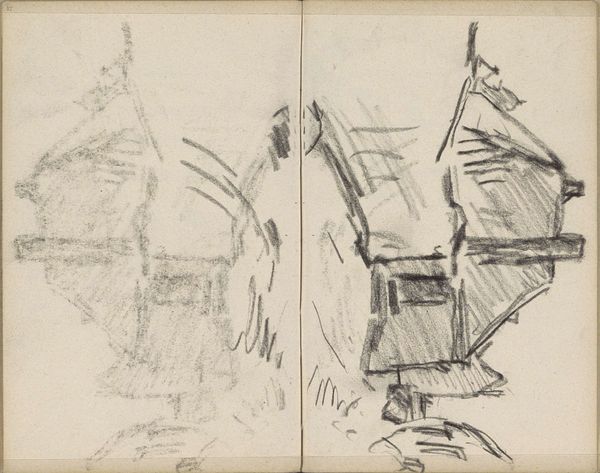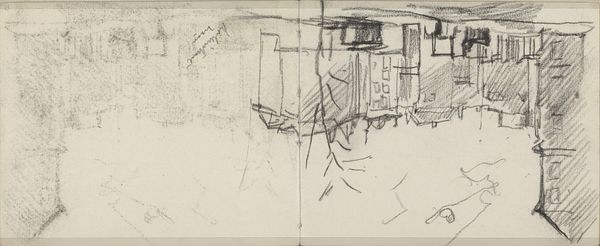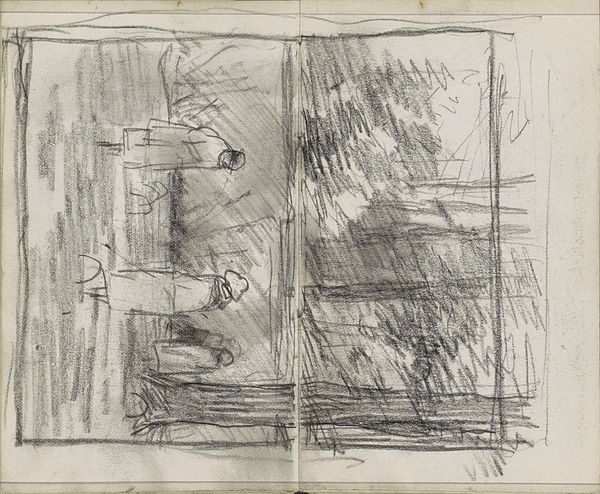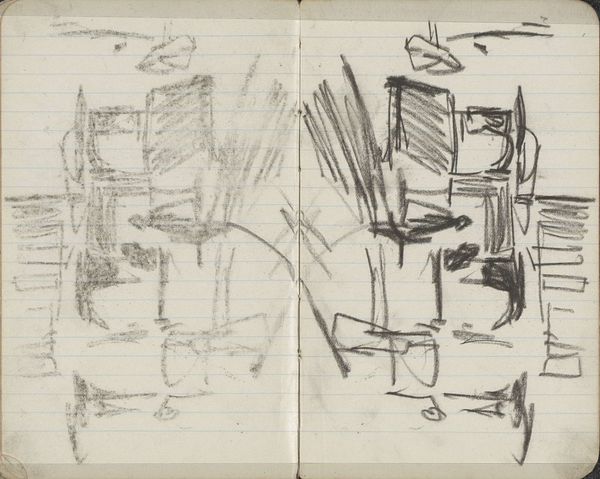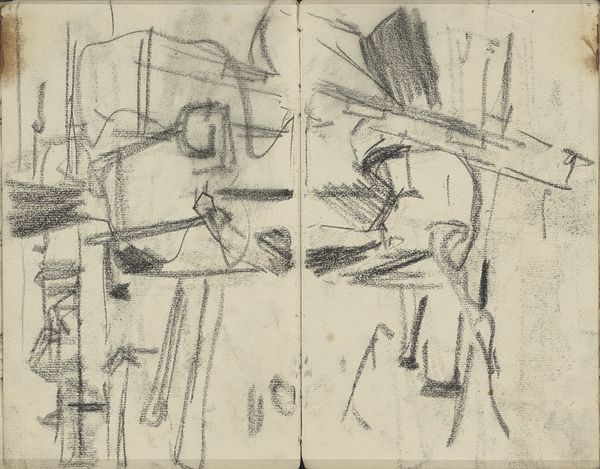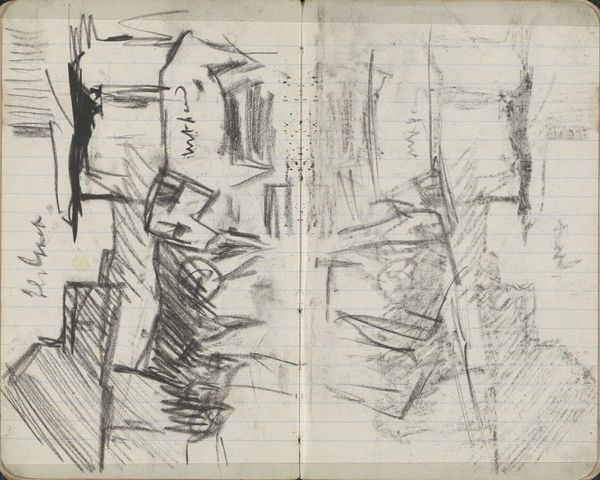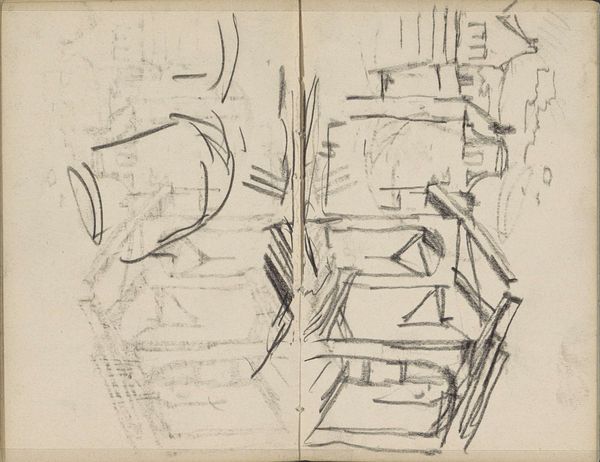
drawing, pencil, architecture
#
drawing
#
landscape
#
geometric
#
sketch
#
pencil
#
architecture
#
realism
Copyright: Rijks Museum: Open Domain
Curator: Welcome. We are looking at "Bebouwing," a pencil drawing made by George Hendrik Breitner, sometime between 1880 and 1906. It is currently held at the Rijksmuseum. Editor: It’s intriguing. Immediately, the sharp angles and heavy shading give it a feeling of impermanence, almost as if these buildings are on the verge of collapse. It's stark, yet somehow… captivating. Curator: That sensation of impermanence might stem from Breitner's approach to Realism and his documentation of Amsterdam. He captured everyday life, including the working class neighborhoods and the impact of rapid urban development. This was a period of enormous growth. Editor: So it speaks to a societal shift, right? Because even the medium here, the pencil, becomes vital. It is immediate, accessible—a tool for documenting a rapidly changing landscape. It is a form of industrial, if I may say so, record keeping. Curator: Absolutely. Breitner's involvement with various artist groups reveals the strong impulse to use art for social documentation. Photography was also gaining traction at this time, and both drawing and photography democratized image-making. They captured the everyday as worthy subjects for observation. Editor: I agree completely. And that choice of medium – cheap and ubiquitous – it places this work in the realm of reportage and working draft, much like field notes one takes in social sciences. You can see the hand of the artist. The social, quite literally, is materialized in the artistic process. Curator: It is also fascinating how this quick sketch on a simple medium captured something very substantial happening at a particular point in history and a specific place, in Amsterdam, that tells about urbanization. It is one instance out of countless experiences that tell stories about society. Editor: A testament, really, to how modest means can translate into significant historical records, reflecting the hands and materials employed, and the cultural landscape these efforts helped construct. Curator: Exactly. I leave you with this: how our perspectives change when we look through different lenses to find the core meaning of an image, and hopefully finding an understanding of art’s role within larger conversations. Editor: Yes. It shows how careful study can find the subtle but significant story in how and why something was made, alongside what it represents.
Comments
No comments
Be the first to comment and join the conversation on the ultimate creative platform.
